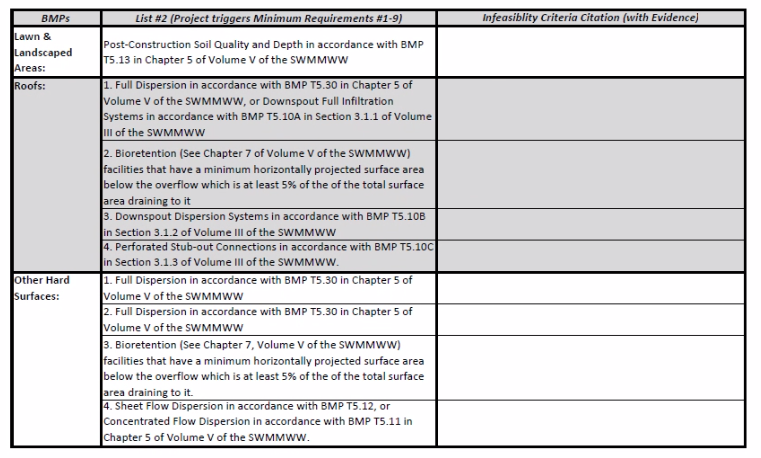AN INTERESTING RIDE
(2014 Stormwater Management Manual for Western Washington)
by David Baumgarten

I was sent a table from a reviewing agency that they had created showing me how they evaluate this process. A three-column format:
Column Two: Lists the BMPS
Column Three: “Infeasibility Criteria Citation (WITH EVIDENCE)”
Column Three is the key, the reviewer is looking for us to “check the box” on infeasibility… with Evidence.
Now for the fun part, “feasibility”. Feasibility shall be determined by evaluation against design criteria, limitations, and infeasibility criteria identified for each BMP in this manual; and Competing Needs Criteria.
Let’s focus on the infeasibility criteria, as these can be interesting.
One example of the frustration with some of the infeasibility criteria is that each BMP has some of the same infeasibility criteria and some have different infeasibility criteria. I had a site where I was evaluating BMP feasibility in the “other hard surfaces” category. The site was an existing paved parking lot where the client was going to add a fuel island with a canopy. We had completed soil borings for the canopy foundation recommendations. The soil underlying the paved parking were fill soils consisting of silt and sandy silt.
BMP 1 Full Dispersion: Infeasible due to the site being completely paved
BMP 2 Permeable Pavement: Infeasible due to “Where fill soils are used that can become unstable when saturated” /” where infiltrating and ponded water below new permeable pavement area would compromise adjacent impervious pavements”
BMP 3 Bioretention: Infeasible see response above to BMP 2
The reviewer commented that the infeasibility criteria for BMP 3 was not valid as it was not one of the “listed” infeasibility criteria for bioretention, and she was correct. I pointed out the soils potentially becoming unstable was still a “real world” issue whether the water was introduced via permeable pavement or bioretention. Silt is still silt and water is still water; however, the water and the silt get together. But “Where fill soils are used that can become unstable when saturated” is not a listed infeasibility criterion for bioretention. I defaulted to lack of vertical separation distance to an impervious layer and that got the box checked. So, stick with the lists for each BMP, don’t go down the logic road. Hopefully, some of these infeasibility criteria will be revisited in the new manual. In talking with many of the reviewers they have little to no leeway if you are going to site infeasibility it has to be an infeasibility criterion from the list for the specific BMP to check the box.

